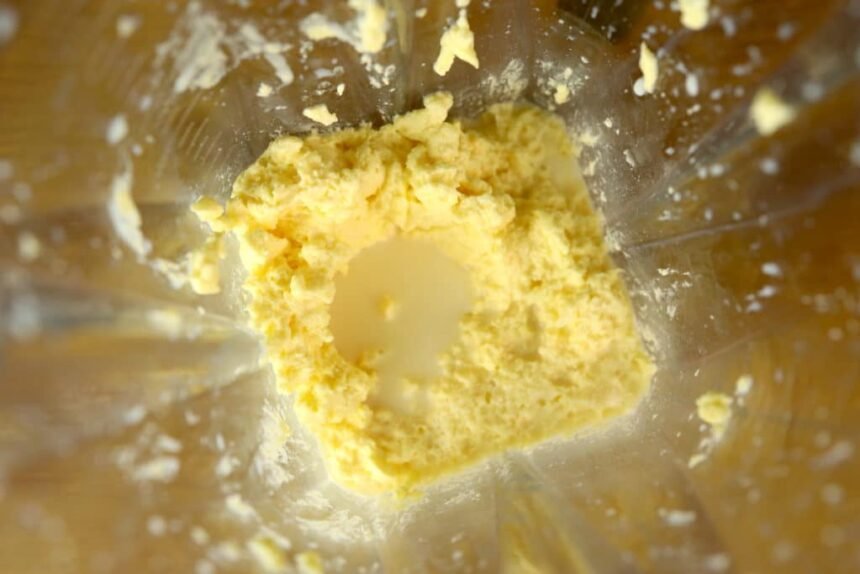Making butter from raw milk is one of the oldest yet most satisfying kitchen traditions. With just cream, a bit of patience, and the right process, anyone can transform fresh raw milk into golden, flavorful butter rich in nutrients. However, many beginners struggle when they first try to learn how to make butter from raw milk. From incorrect temperatures to over-churning, small mistakes can prevent you from achieving that creamy, spreadable consistency.
In this article, we will go step by step through the most common mistakes people make, and how you can avoid them to ensure success every time. We’ll also look at where to buy raw butter, the science of butter-making, and tips to make your butter last longer.
By the end, you’ll know exactly how to make raw milk butter the right way while avoiding setbacks in the kitchen.
Why Raw Milk Butter Is Special
Before discussing mistakes, it’s worth understanding why butter made from raw milk is unique. Raw milk contains beneficial enzymes, probiotics, and nutrients that are often destroyed in commercial pasteurization processes. When you learn how to make butter with raw milk, you are preserving these natural qualities in your butter, giving it a richer flavor and higher nutritional value.
Homemade raw butter is:
-
Rich in vitamins A, K2, and D.
-
Naturally yellow-colored due to beta-carotene from grass-fed cow’s milk.
-
Packed with healthy fats that support gut health and energy levels.
-
Free from unnecessary preservatives and chemical processing.
Now, let’s explore the seven mistakes you should avoid when making butter from raw milk.
Mistake 1: Using Milk That Isn’t Fresh Enough
When learning how do you make butter from raw milk, the first step is always ensuring the milk is fresh. Using milk that has been sitting too long may result in bitter or off-tasting butter. Raw milk begins to sour naturally after 3–5 days, depending on storage conditions.
How to fix it:
-
Use raw milk that is no more than 48 hours old.
-
Store milk in clean glass jars in the refrigerator to maintain freshness.
-
If you want a slightly tangy butter, leave milk out for a few hours at room temperature, but avoid letting it turn fully sour.
Mistake 2: Skipping the Cream Separation Step
One of the biggest misunderstandings about how to make raw milk butter is assuming that you can churn milk directly. Raw butter comes from the cream portion of milk, not the liquid. If you don’t separate the cream properly, you’ll struggle to make butter.
How to fix it:
-
Allow raw milk to sit in the refrigerator for 12–24 hours. The cream will naturally rise to the top.
-
Skim off the cream with a spoon or ladle.
-
Save the leftover skimmed milk for other uses like baking, cheese-making, or drinking.
This simple step ensures your butter is rich and creamy rather than thin.
Mistake 3: Using the Wrong Temperature
Temperature control is one of the most overlooked aspects of how to make butter with raw milk. If the cream is too cold, it won’t churn. If it’s too warm, you’ll end up with an oily mess.
How to fix it:
-
Keep cream at around 60–65°F before churning.
-
If the cream is too cold, let it sit out for 15 minutes.
-
If it’s too warm, chill it back in the fridge before starting.
Maintaining this temperature range will help the fat globules in cream break down into butter more efficiently.
Mistake 4: Over-Churning the Butter
Beginners often get excited and keep churning well past the point when butter is ready. This leads to greasy butter that loses its smooth, spreadable texture.
How to fix it:
-
Watch closely after 10–15 minutes of churning (if using a stand mixer or hand mixer).
-
Once you see the butter separate from the liquid (buttermilk), stop immediately.
-
Strain out the buttermilk and rinse the butter under cold water to remove any residue.
Stopping at the right moment guarantees creamy, fresh-tasting butter.
Mistake 5: Forgetting to Wash the Butter
One of the biggest mistakes when making raw milk butter is forgetting to wash it properly. Washing butter is critical to remove leftover buttermilk, which causes spoilage and sour flavors.
How to fix it:
-
Place the butter in a clean bowl and rinse it under very cold water.
-
Knead or press it with a spatula to release trapped buttermilk.
-
Repeat rinsing until the water runs clear.
This step ensures your homemade butter lasts longer in the fridge.
Mistake 6: Skipping the Salt (Optional but Recommended)
Unsalted butter can taste delightful, but completely skipping salt leaves your butter bland and shortens its shelf life. Adding salt enhances flavor while acting as a natural preservative.
How to fix it:
-
Add ¼ teaspoon of high-quality sea salt for every cup of butter.
-
Mix well during the kneading stage.
-
If you prefer unsalted butter, be prepared to consume it faster to avoid spoilage.
Mistake 7: Storing Butter Incorrectly
Even if you’ve mastered how to make butter from raw milk, storing it incorrectly can shorten its lifespan. Homemade butter doesn’t contain stabilizers, so it needs proper care.
How to fix it:
-
Wrap butter in parchment paper or keep it in an airtight glass container.
-
Store in the refrigerator for up to 10 days.
-
For longer storage, freeze butter in small portions—it can last up to 6 months frozen.
Following these steps ensures your butter remains fresh and flavorful.
Bonus Tips: Make Your Butter Unique
-
Add herbs and spices like garlic, chives, or rosemary for a gourmet touch.
-
Try cultured butter by letting cream sit out with a tablespoon of yogurt before churning.
-
Experiment with textures by making whipped butter with a hand mixer for lightness.
These creative options can make your butter versatile for cooking and serving.
Where to Buy Raw Butter
If you don’t have access to fresh raw milk but still want to enjoy the benefits of raw butter, you may wonder where to buy raw butter. Availability depends on your location, since raw dairy laws vary by state and country. Farmers’ markets, local dairy cooperatives, and farm-to-table suppliers are often the best sources.
For detailed insights on raw butter availability, regulations, and sourcing, you can check high authority resources such as the Weston A. Price Foundation at westonaprice.org.
Read More: Where to Buy Raw Butter Locally and Online
Final Thoughts
Learning how to make raw milk butter at home is a rewarding process that connects you with timeless traditional food practices. However, avoiding the seven mistakes above—using old milk, skipping cream separation, ignoring temperature control, over-churning, forgetting to wash butter, skipping salt, and improper storage—will ensure your results are consistently excellent.
Whether you’re spreading it on warm homemade bread or using it in cooking, raw butter is both delicious and nutrient-dense. Now that you know exactly how do you make butter from raw milk correctly, you can enjoy the benefits of fresh, high-quality, and preservative-free butter right from your own kitchen.









